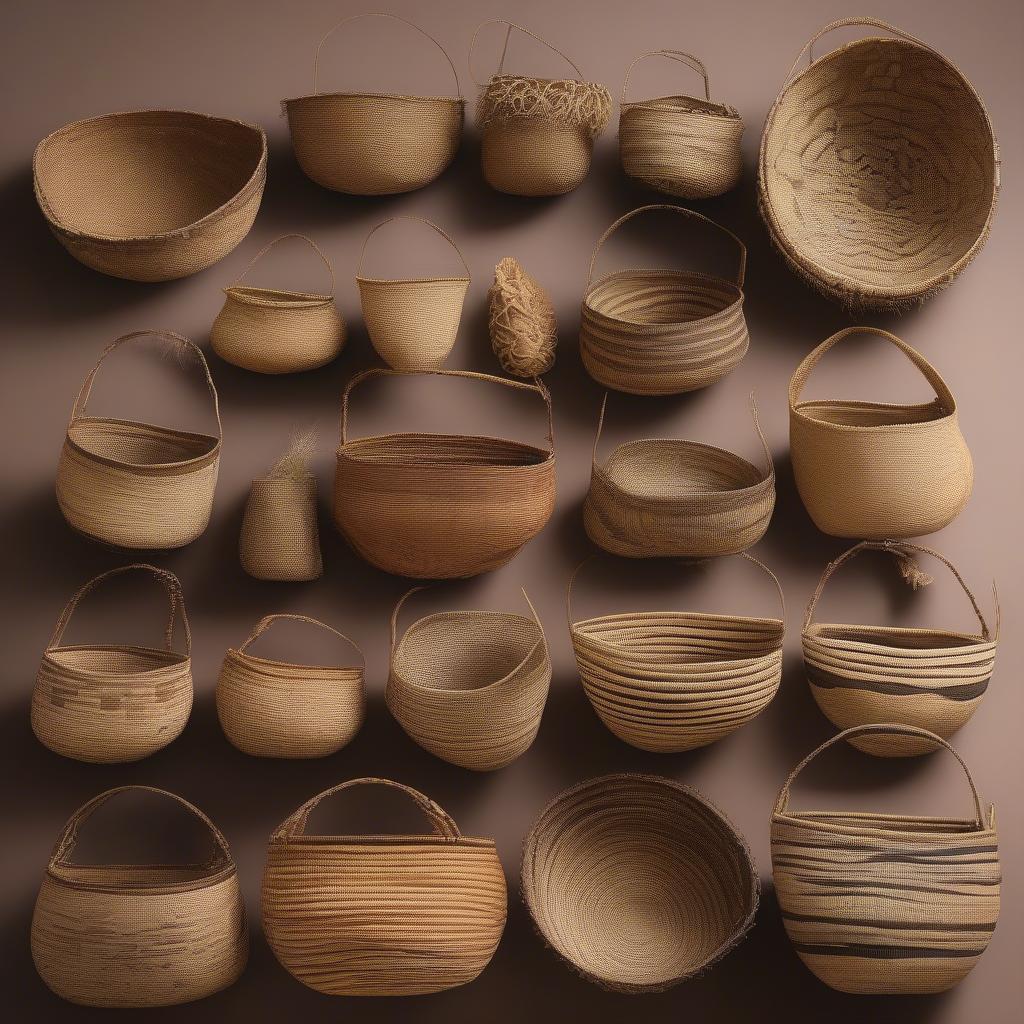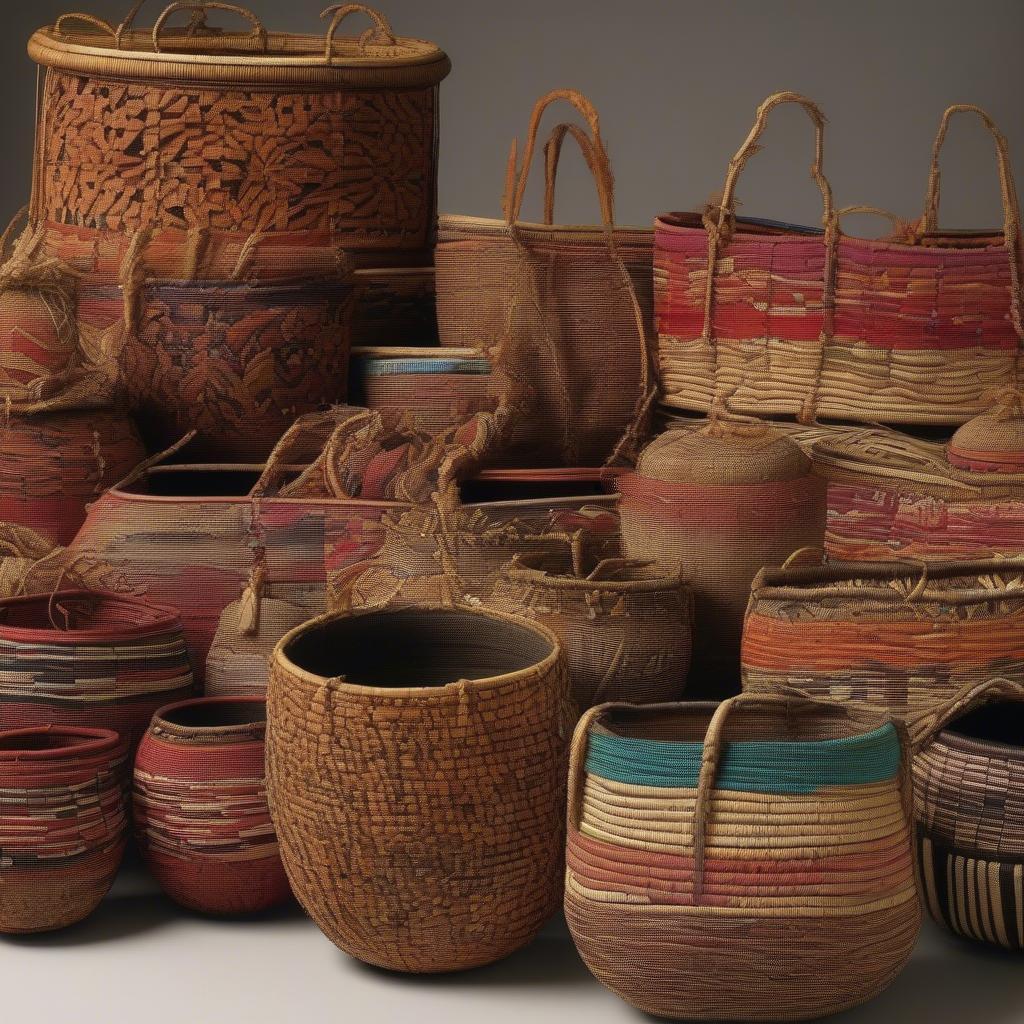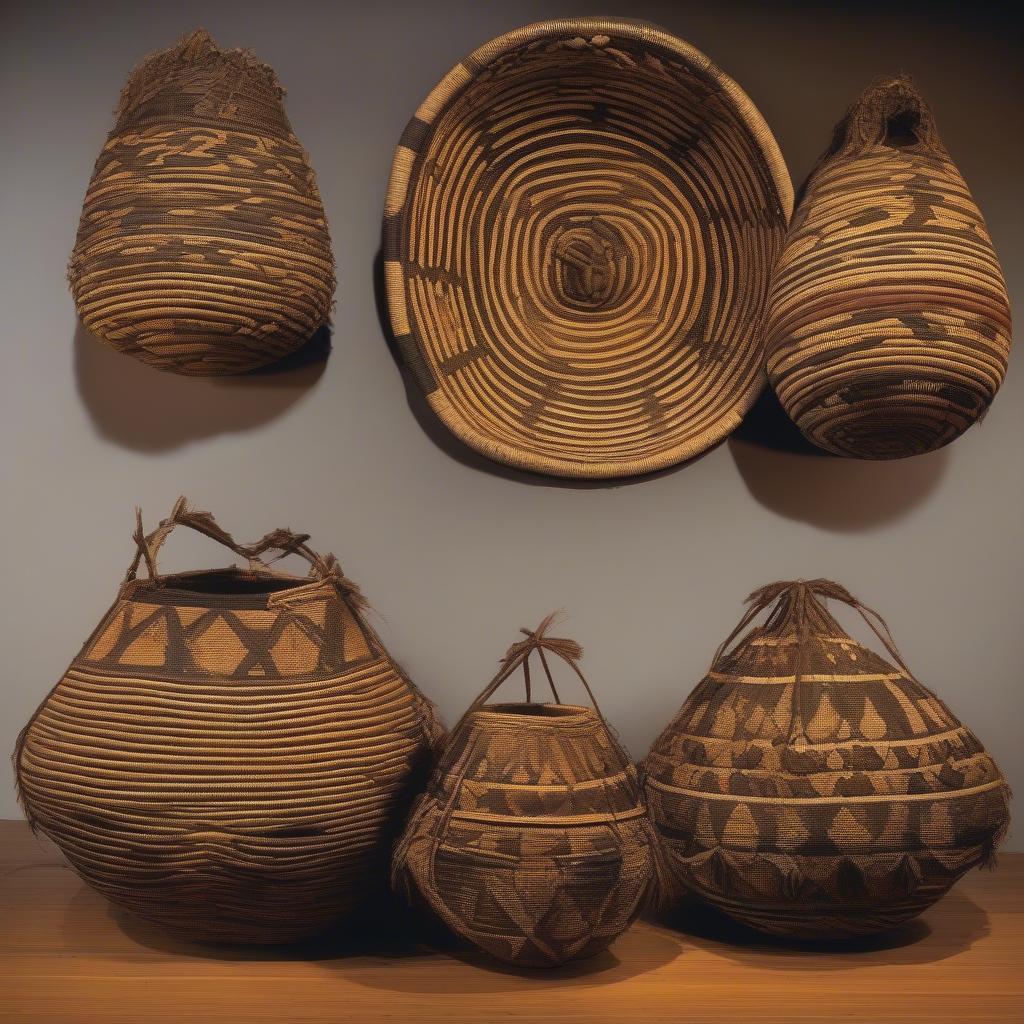Basket Weaving
Papua New Guinea Basket Weaving: A Rich Cultural Tradition
Papua New Guinea Basket Weaving is a vibrant art form deeply intertwined with the country’s diverse cultures. From intricate patterns to functional designs, these baskets are more than just containers; they are expressions of heritage, artistry, and daily life. This article will explore the fascinating world of Papua New Guinea basket weaving, examining its regional variations, materials, techniques, and significance in local communities.
Exploring the Diversity of Papua New Guinea Basket Weaving
The diverse geography and cultural landscape of Papua New Guinea have given rise to a wide array of basket weaving styles. Each region boasts its unique techniques, materials, and decorative motifs, reflecting the specific environment and traditions of its people. Highland communities often utilize natural fibers like grasses and vines, creating robust baskets for carrying goods and produce. Coastal regions, with access to pandanus and other tropical plants, produce finely woven baskets adorned with intricate patterns and vibrant dyes.
 Highland Baskets of Papua New Guinea
Highland Baskets of Papua New Guinea
One striking example is the bilum bags of the Highlands, known for their looped construction and ability to stretch and accommodate various shapes and sizes. These bags are not only practical but also hold cultural significance, often representing status and clan affiliation. In contrast, the coastal communities of Sepik and Madang are renowned for their intricately patterned baskets, often decorated with shells, feathers, and natural dyes, reflecting a rich artistic heritage. These decorative elements elevate the baskets from utilitarian objects to works of art, demonstrating the skill and creativity of the weavers.
Materials and Techniques: A Closer Look at Papua New Guinea Basket Weaving
The materials used in Papua New Guinea basket weaving are as diverse as the styles themselves. Natural fibers are the foundation, with locally sourced materials playing a vital role. From the sturdy grasses of the highlands to the pliable pandanus leaves of the coast, each material lends its unique properties to the finished basket.
 Coastal Baskets of Papua New Guinea
Coastal Baskets of Papua New Guinea
The techniques employed in Papua New Guinea basket weaving are equally varied. Coiling, twining, and plaiting are common methods, with each region specializing in particular techniques passed down through generations. The meticulous process often involves intricate weaving patterns, creating both functional and aesthetically pleasing designs. Some communities utilize dyes derived from natural sources, adding vibrant colors to their creations.
The Cultural Significance of Papua New Guinea Basket Weaving
Papua New Guinea basket weaving is more than just a craft; it is a cultural practice deeply embedded in the fabric of society. Baskets are integral to daily life, used for carrying, storing, and trading goods. They also play a vital role in ceremonies, rituals, and social interactions, often serving as symbolic gifts or representations of status and identity.
“Basket weaving in Papua New Guinea is a living tradition,” says Dr. Mary Kendi, an anthropologist specializing in Pacific Island cultures. “It connects generations, preserving cultural knowledge and artistic expression.”
 Ceremonial Baskets of Papua New Guinea
Ceremonial Baskets of Papua New Guinea
The process of creating these baskets is often a communal activity, fostering social bonds and strengthening community ties. Younger generations learn from experienced weavers, ensuring the continuation of these ancient traditions.
“The intricate designs and techniques involved in basket weaving showcase the remarkable artistry and creativity of the Papua New Guinean people,” adds Emily Sawa, a renowned art curator specializing in traditional crafts. “Each basket tells a story, reflecting the unique cultural heritage of its creator.”
Conclusion: Preserving the Art of Papua New Guinea Basket Weaving
Papua New Guinea basket weaving is a testament to the rich cultural heritage and artistic ingenuity of its people. From everyday tools to ceremonial objects, these baskets embody the deep connection between people, nature, and tradition. By understanding and appreciating the diverse styles, materials, and techniques of Papua New Guinea basket weaving, we can contribute to the preservation of this valuable art form for generations to come.
FAQ
-
What are the most common materials used in Papua New Guinea basket weaving?
Natural fibers like grasses, vines, and pandanus leaves are commonly used. -
What are some of the different basket weaving techniques practiced in Papua New Guinea?
Coiling, twining, and plaiting are common techniques. -
What is the cultural significance of baskets in Papua New Guinea?
Baskets are used for practical purposes, ceremonies, rituals, and as symbolic gifts. -
Where can I find authentic Papua New Guinea baskets?
Authentic baskets can be found at reputable craft markets and online stores specializing in fair trade. -
How can I learn more about Papua New Guinea basket weaving?
Museums, cultural centers, and online resources offer valuable information about this art form. -
Are there any organizations working to preserve Papua New Guinea basket weaving traditions?
Yes, various organizations and initiatives support local artisans and promote cultural preservation. -
What is the significance of the bilum bag in Papua New Guinea culture?
The bilum bag is a significant cultural symbol, often representing status and clan affiliation, particularly in the Highlands.
Need assistance? Contact our 24/7 customer service team at Hotline: +84 388 951 999 or visit our offices at Hanoi, Vietnam or Tech Avenue, Suite 12, San Francisco, CA 94105, USA. You can also explore other related articles on our website.
